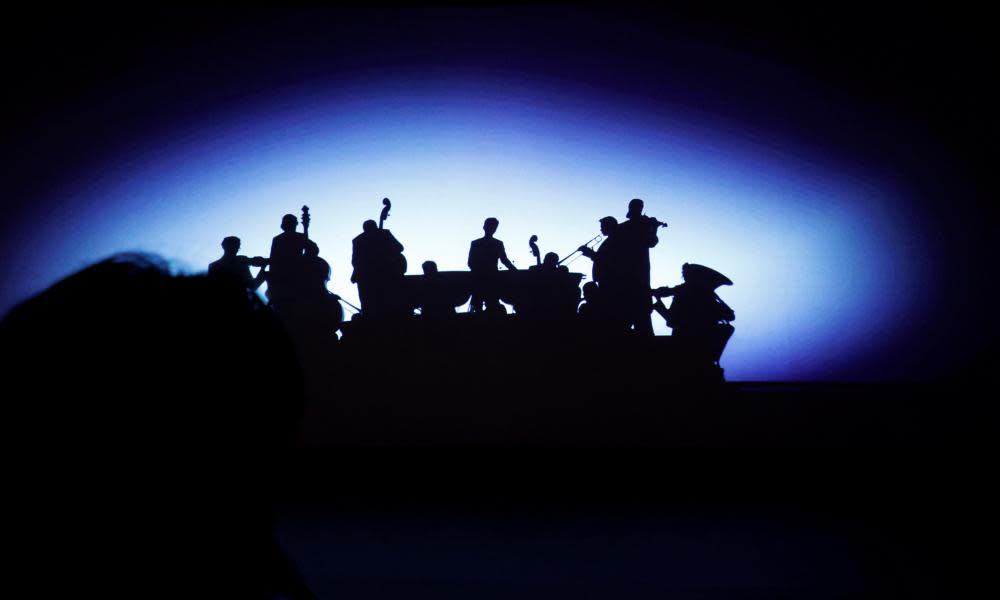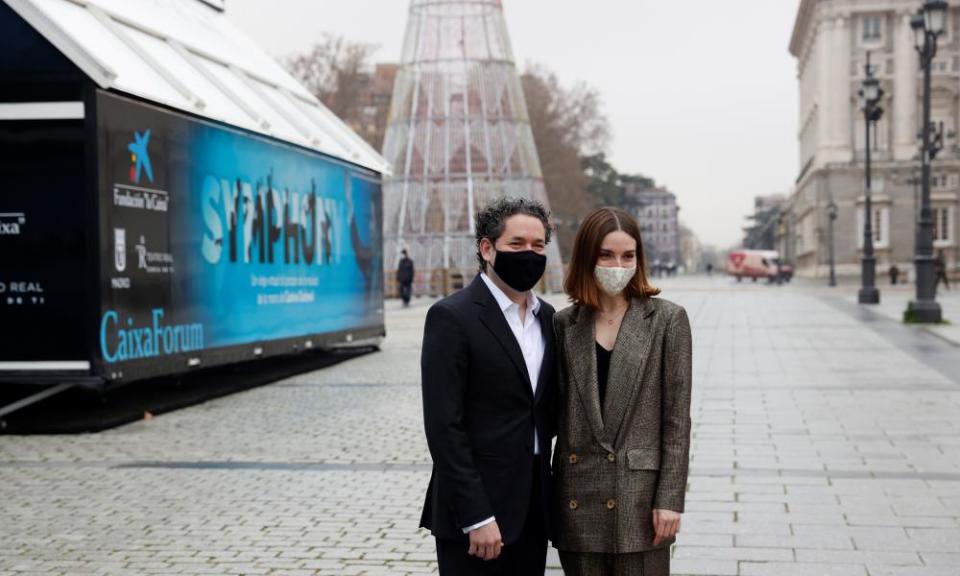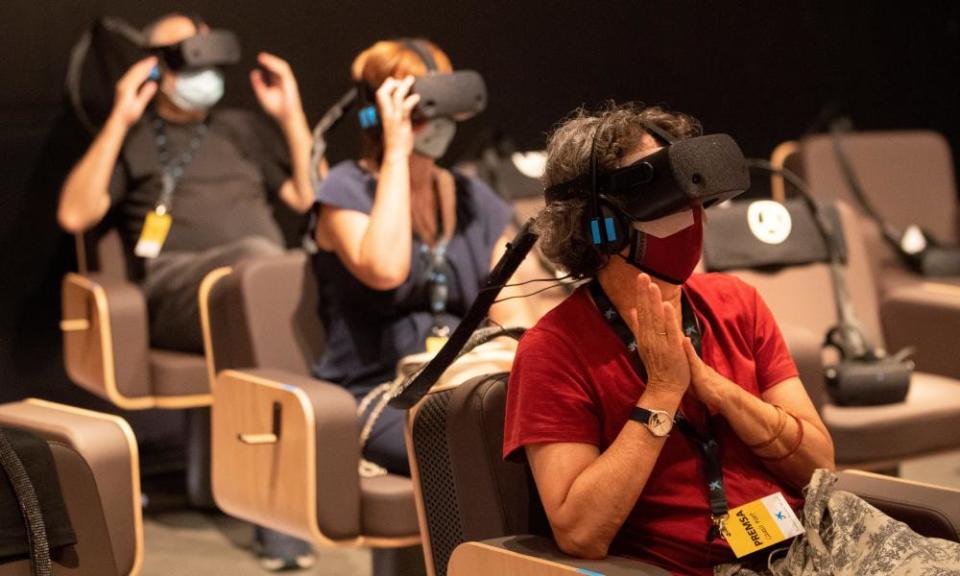Can a trippy VR film bring classical music to a new generation?

The two huge white trailers that sit between the Royal Palace and the Royal theatre in central Madrid form an unlikely pair of portals to a universe of boundless visual and aural possibility.
But step out of the December drizzle and in through their doors and you will find yourself crawling inside a violin, sitting in an orchestra before one of the most famous conductors in the world and bathed in a stream of lysergic images, all to the strains of Beethoven, Mahler and Leonard Bernstein.
After four years and the efforts of 250 people – not least those of the Venezuelan conductor and violinist Gustavo Dudamel – Symphony, a virtual reality film intended to bring orchestral music to a new generation of listeners, has finally finished tuning up.
The film is split into two, 12-minute sections. The first, shown on a giant screen, follows three young musicians in Spain, the US and Colombia as they practise their instruments and move through landscapes and soundscapes that range from the Mediterranean coast to the streets of New York and a coffee farm on a tropical mountainside.
For the second, visitors are invited into the other trailer, given a virtual reality headset and headphones, and urged to take leave of their senses.

The lights come up to reveal the Mahler Chamber Orchestra on stage at Barcelona’s Gran Teatre del Liceo – of which you are suddenly part. Before you stands an effervescent Dudamel, twitching and pointing his way through the first movement of Beethoven’s Fifth Symphony.
From that point on, the film peels itself even further away from reality, immersing visitors in a psychedelic virtual world of intricate orchids, distant stars and roiling galaxies. Next stop is a luthier’s workshop, where the viewer becomes trapped inside a violin and then flies through the constituent parts of a trumpet.
After a trippy detour round a fireworked-flecked forest and Dudamel’s assertion that the sounds coaxed from wood and metal are nothing without the presence of true soul, you are dropped back into you seat in the Barcelona concert hall and then, eventually, to a rather disappointing reality.

“The fundamental point is about using technology as a resource for connecting people with the essence of music – to bring them a little closer to it all visually,” said Dudamel.
“We also want to show people the intimacy of the musical act – from the most elemental sounds, like the daily cacophony of noises we hear – to one of the greatest orchestras in the world playing in one of the most beautiful concert halls in the world. It’s a total experience and a unique experience.”
The project, a collaboration between the Dudamel Foundation and La Caixa Foundation, is free to visit and will be in Madrid until 19 January. After that, it will begin a 10-year tour of 100 towns and cities across Spain and Portugal.
Symphony was originally intended to debut in April, but, like so much else, was delayed by the pandemic. The first hint of trouble came in January when the computers and headsets failed to arrive from China.
Social distancing is strictly observed in the trailers and the seats, headsets and headphones carefully disinfected after each use.
“We want people to be comfortable and we hope that when the public come and see Symphony, they can forget – for 40 minutes at least – about the virus that’s not letting us live,” said Elisa Durán, the deputy general director of La Caixa Foundation.
Igor Cortadellas, who directed the two films, likens the project to “a visual poem that was made by more than 250 people”. But despite the talents of all involved, Cortadellas admits to being worried about how exactly the poem would be written. Inspiration eventually came from the stars – or, more prosaically, from some 1970s articles about Nasa.

“When they sent the Voyager 1 and Voyager 2 probes into space to try to connect humankind with any alien civilisations, they included a compendium of Earth noises: thunder, the sound of the sea and birdsong,” he said.
“There was also music, including the first movement of Beethoven’s Fifth symphony. Those two very simple things – the music of nature and the music of Beethoven – were my starting points.”
Dudamel also hopes that Symphony will succeed in making first contact with young people who see classical music as a forbidding, alien and rarefied entity.
“People often think about classical music as very serious rigorous,” he said. “But we want people to enjoy the experience and for it to be a first step – a first connection – so that a new generation can live music and understand music and feel it belongs to them.”
• Symphony: A Journey to the Heart of Classical Music, from 22 December to 19 January, Madrid, Spain

 Yahoo News
Yahoo News 
